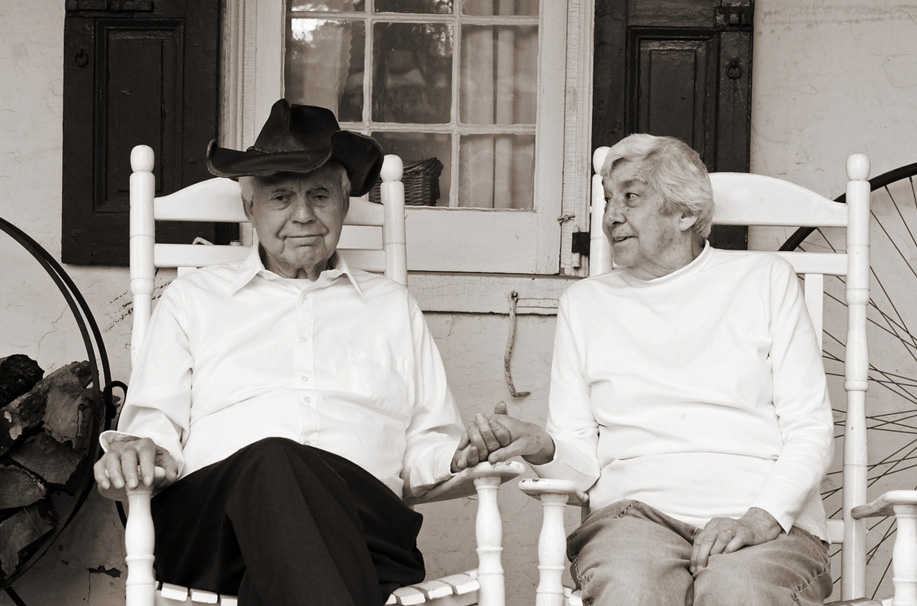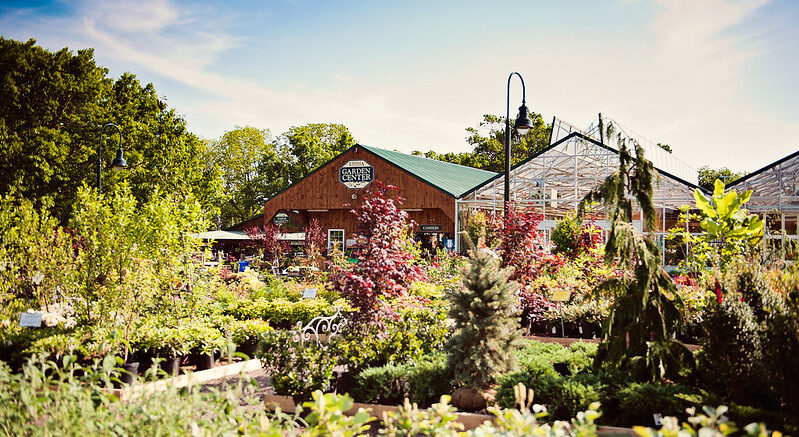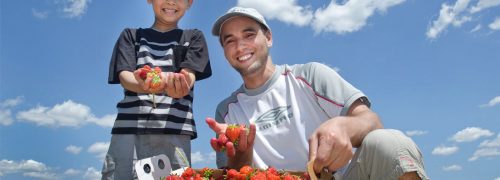Overview
Linvilla Orchards is a 300-acre family farm dedicated to agriculture, entertainment and education. A trip to Linvilla creates family memories that last a lifetime and generations of Delaware Valley families have returned year after year to experience all of the things that make Linvilla Orchards special. Each season brings more things to see and do at Linvilla. Take a hayride through our fields and orchards; pick your own fresh fruit and veggies, climb aboard our passenger train, get your face painted like a princess or pirate; visit with the farm animals in the Barnyard, go fishing at Orchard Lake and play in our Playland Playground.
-
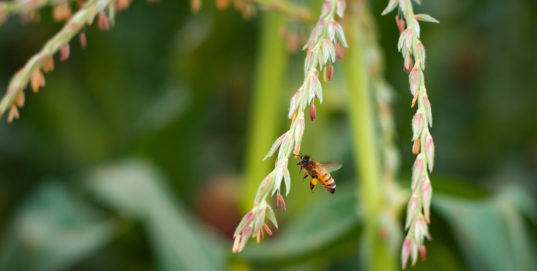 See More
See MoreStewards of the Land
-
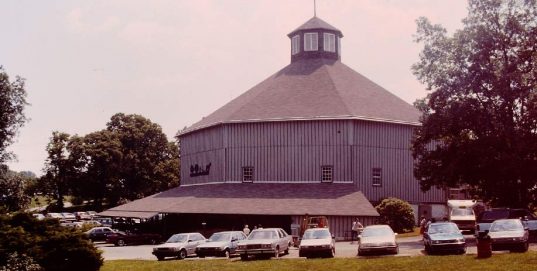 See More
See MoreOur History
-
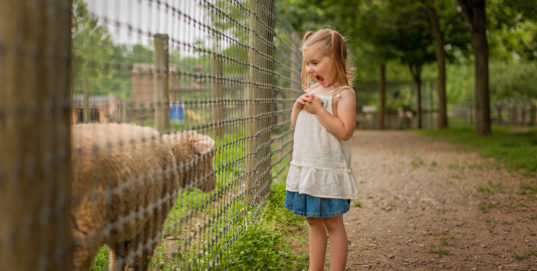
Family Fun
See MoreFun for the whole family with exciting attractions, events and festivals all year-round!
-
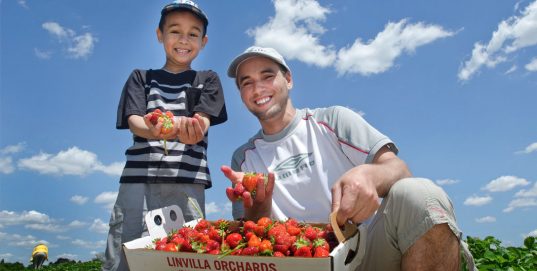
Pick Your Own
See MoreSupport local agriculture and make lifelong memories picking your own fruit and vegetables.
-
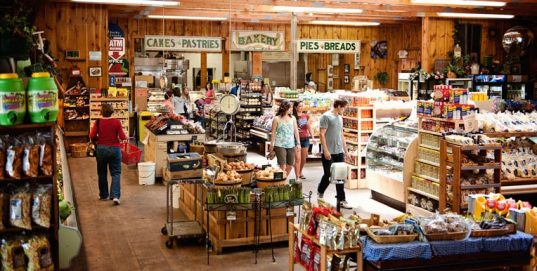
Farm Market
See MoreFresh produce, baked goods, gourmet specialties, handmade candies and much more.
-
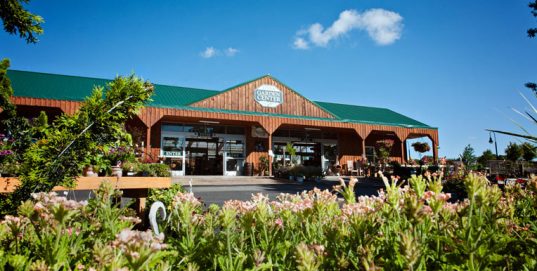
Garden Center
See MoreOur state-of-the-art nursery filled with plants, trees, garden accessories, seasonal home décor and more!
-
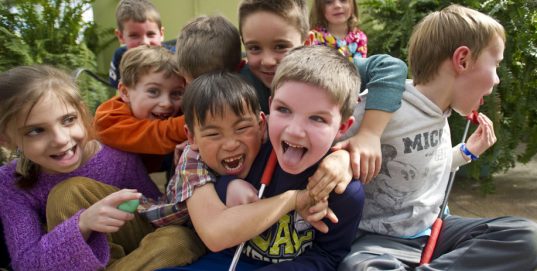
Tours & Parties
See MoreFrom field trips to family reunions, Linvilla Orchards is the perfect venue for your next gathering.
-
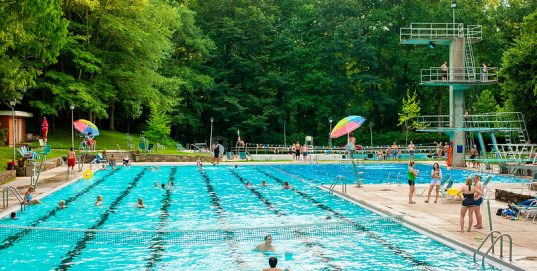
Swim Clubs
See MoreLinvilla Orchards operates two private swim clubs: Knowlton and Hidden Hollow. Summer Memberships are available.
Our History
In 1914, Arthur Linvill and his mother Lydia purchased a dairy farm with an eighty-foot tall octagonal barn. Arthur and his mother delivered fresh milk and cream to Swarthmore by horse and buggy, but Arthur wanted to grow fruit. Arthur planted orchards and then sold the fruit from a horse-drawn wagon. With the increased use of automobiles, people started coming to the farm where the Linvill family sold their produce from the front porch of the farm house.
As the produce became more abundant, the farm became more popular and the Farm Market opened in the Octagonal Barn. Over the years a bakery and gift shop were added which complemented the operation. Neighbors from all over the Delaware Valley have been coming back ever since.
In 2002, the picturesque barn was destroyed in a fire. Arthur's son Paul, Paul's wife Peg, and their children and grandchildren continue to operate Linvilla Orchards — staying faithful to the tradition that has made Linvilla such a great place to visit for over a century.
We hope you'll be a part of the next great era in Linvilla history.
Time Line
1914 – Arthur Linvill and his mother Lydia Linvill purchased the original 110 acres of Linvilla with farm house and octagonal barn. Additional pieces of property added throughout the years to create the current 350 acre farm. The Octagonal barn housed some cows and horses, but the dairy herd was not included in the purchase of the farm. Arthur purchased cows to continue the dairy, but Arthur’s interests were in orchard fruit. He planted fruit trees shortly after the purchase.
1914 - Arthur farmed buckwheat on the property his first few years.
1915 – First apple and peach trees planted on the farm
1915 - Fruit and milk sold from cart and wagon
1922 - Arthur married Mabel Wolf
1925 – 1929 Arthur and Mabel have three sons born Lawrence, Paul, and Donald
1927 – Knowlton Swim Club mud hole started with horse and scoop
1940’s – The sales of peaches and apples moved off the porch and into the barn and the last of the animals moved to outside pastures.
1953 - Paul attempts to sail around the world.
1952-1958 Lawrence and Esther Linvill have four children – David, Kenneth, Deborah, and Brian
1955 -1960 Donald and Libby have three children – Cathy, Marie, and Barb
1956 - Paul returns to farm and works with his two brothers and his father (Arthur) and his mother (Mabel) working the farm.
1957 – Paul Linvill married Margaret Fisher from East Haddam Connecticut (Peg Linvill)
1959-1965 Paul and Peg Linvill have four children – Susan, Steven, Nancy and Jean
1960's (mid) - School tours started.
1960’s (late)- Bakery ovens purchased and bakery started in farm market.
1962 - Donald, the youngest of the three brothers, sold his shares and started a produce business - Linvill’s Little Red Barn - in California.
1964 – Porch added to octagonal barn
1965 – Hidden Hollow Swim Club Opens
1969 – Dried flower shop, "Weed, Pod & Posy Shop," added on the second story of the Octagonal barn.
1971 - Linvilla’s Pumpkinland display wins first place at Philadelphia Horticultural Society's Harvest Show
1970's - David Linvill (Larry Linvill's son) established and managed the PYO operation - mostly strawberries.
1980 - Arthur Linvill passed
1985 - Linvilla Orchards awarded the Guiness Book of World Records "World's Largest Rag Doll" for Peggy Ann who still presides over Pumpkinland each year.
1987 – Larry Linvill retired and sold his development rights to Middletown TownshipPaul's family obtained 'Life Estate' rights of township property
1987 – Paul and Peg’s four adult children return to the farm to work along side of their parents.
1988- Linvilla purchased the neighboring warehouse building for storage and refrigeration.
2002 - Devastating fire destroys Octagonal BarnNew farm market built
Maintenance workshop moved
2010 - 15,000 square foot greenhouse and garden center added
2013 - Linvilla purchased 36 acre neighboring property
2018 - Margaret Fisher Linvill passed
2019 - Beer garden added in the stone foundation left from the Octagonal barn after the fire.
2019- The next generation of Linvills, grandson Elijah, returns to work on the farm after college.
2020 - Paul Linvill passed
Misc. Tidbits
Arthur held a degree in electrical engineering from Drexel University
The rose garden in front of the original farm house was a favorite of Arthur Linvill and of his son Paul. Both cherished the blooms.
Arthur planted 12 different kinds of heather around his waterfall garden. One heath or heather bloomed each month of the year.
Arthur maintained a tree nut farm in Landenberg, PA for many years.
Lydia did not permit the sale of apple cider on the farm because of its alcohol potential.
Stewards of the Land
Water
The garden center has garden retention tanks that can hold up to 13 thousand gallons of water. The rain water that rolls off the roof is collected in the tanks. 1 inch of rain = 10,000 gallons of water! We use the collected water to water our plants in the greenhouse. What doesn’t fit in the tank goes back into the water table. We also have a water retention pond that reduces the rate that rain water enters our local streams and rivers, preventing erosion and flooding.
Recycling
Recycling is processing used materials into new products to prevent waste of fresh raw materials and reduce pollution.
We recycle just about everything on the farm!
Cardboard. - We have a cardboard baler and all of the cardboard that is delivered to us is baled and recycled. Plastic, glass, aluminum, steel, cardboard, plant material, food waste, trees and waste wood, water and even the rays from the sun above and the heat from below our feet.
Heating with our Wood Chip Burner
Our green house and garden center is heated by our friend "Chip". Chip heats the water for our radiant floor heating system. With the addition of “Chip,” our wood chip burner, we recycle waste wood into fuel to help heat our buildings. Chip burns at such a high heat that the ash and particulate matter is much less, so we have a clean, more efficient system. We accept trees and branches from tree surgeons and gather them when pruning our orchards to make our wood chips.
Radiant floor Heat
Our Garden Center uses the wood chip burner to heat the concrete floors. The radiant floor heat is a very efficient form of heat. By heating the concrete floor the heat is more evenly spread out and the floor holds the heat making it more efficient and requiring less fuel to maintain the heat in the building.
Geothermal Heating and cooling System
Only a few feet below our feet the earth’s temperature stays at a fairly consistent 55 degrees. During the winter when the air is colder than 55 degrees, our system collects the Earth's natural heat through a series of pipes, called a loop, installed below the surface of the ground. Fluid circulates through the loop and carries the heat to the greenhouse. This process uses much less fuel to heat or cool the water since the temperature of the water is neither too hot nor too cold. Our gift shop is cooled in the summer months by the geothermal cooling. The 55 degrees cools the air it is then distributed through our cloth ducts that hang on our ceiling of the gift shop.
Christmas Trees
Linvilla raises up to 40,000 Christmas Trees! In one season, one green tree produces as much oxygen as 10 people inhale in one year. So, by raising Christmas trees we provide enough oxygen for 400,000 people each year! One adult Christmas tree can also absorb approximately 48 pounds of carbon dioxide per year!
When the holiday season is over and everyone is done with their trees, we collect Christmas trees from around Delaware County and use them on the farm! We create a Christmas tree mulch and use it on our Blueberries! Blueberry bushes love the acidic mulch produced from pine trees.
Solar
Our greenhouse has solar panels on the south facing roof on the north side of the building. The electricity produced by the panels produces enough electric to run the garden center. The solar sun rays that come into the greenhouse heat the concrete floor and the building in the winter months. They also provide the necessary light for the plants. While nice and toasty during the day from all the sunlight.
Our farm market uses a solar hot water heater on the roof of the Farm Market to heat all of the water used in the bakery, farm market and building!
Compost
Linvilla works with Kitchen Harvest to create our homemade compost. Some of the left over fruits and vegetables from the produce department get fed to the animals, the rest is used to make compost. Our compost is made at Linvilla from food scraps, non-usable produce, yard waste, plant waste, shredded leaves, and other compostables to create a highly nutrient filled compost. Our compost is OMRI certified (Organic Materials Research Institute) as an organic material that may be bagged as a product called Ecoscraps. We are proud of our contribution of reducing food waste in the landfills.
Sustainably harvested wood
You may have noticed last time you were here, that we have local Fire Wood and Smoke Wood. We sustainably manage our wooded areas to promote biodiversity by harvesting our Fire Wood and Smoke Wood from around the Farm! We also recycle wood from local landscape operations reducing waste and repurposing material.
Mulch
The leftover wood chips, twigs and leaves get ground up into mulch. The burner and mulch processing both keep brush from being trucked long distances and filling valuable landfill space. Our Mulch is available for sale and used around the farm. Mulch has many benefits, such as organic matter, ground cover to keep weeds away and it helps retain moisture in the soil.
Contour farming- Soil and water conservation
By using conscious farming techniques, we can mindfully tend to the land we are working on. Contour Farming is one of the ways we do that. Contour farming is farming with row patterns that run nearly level around the hill -- not up and down the hill. Contour farming naturally helps stop erosion. One of the places you can see contour farming in use here at Linvilla is in our Raspberry patch! Steve Linvill sits on the board of directors for the Delaware County Conservation District.
Honeybees
Honeybees are instrumental in providing our crops. We work with a local beekeeper to keep our bee population around the farm healthy and thriving! We have a variety of bee boxes around the farm. Learn more about our honeybees! Next time you are in the market check out our Linvilla’s Own Honey- a great solution to your seasonal allergies!
Bluebirds
Blue Birds are a native bird whose numbers have been significantly reduced by habitat destruction and invasive species competition. We have 30 boxes on the farm. The boxes encourage nesting for them!
Fore the Planet Mini-Golf
This exhibition pairs important environmental topics with the fun of miniature golf. 18 unique educational holes explore butterfly metamorphosis, a tropical rainforest, evolution, dinosaur extinction, food chains and more!
